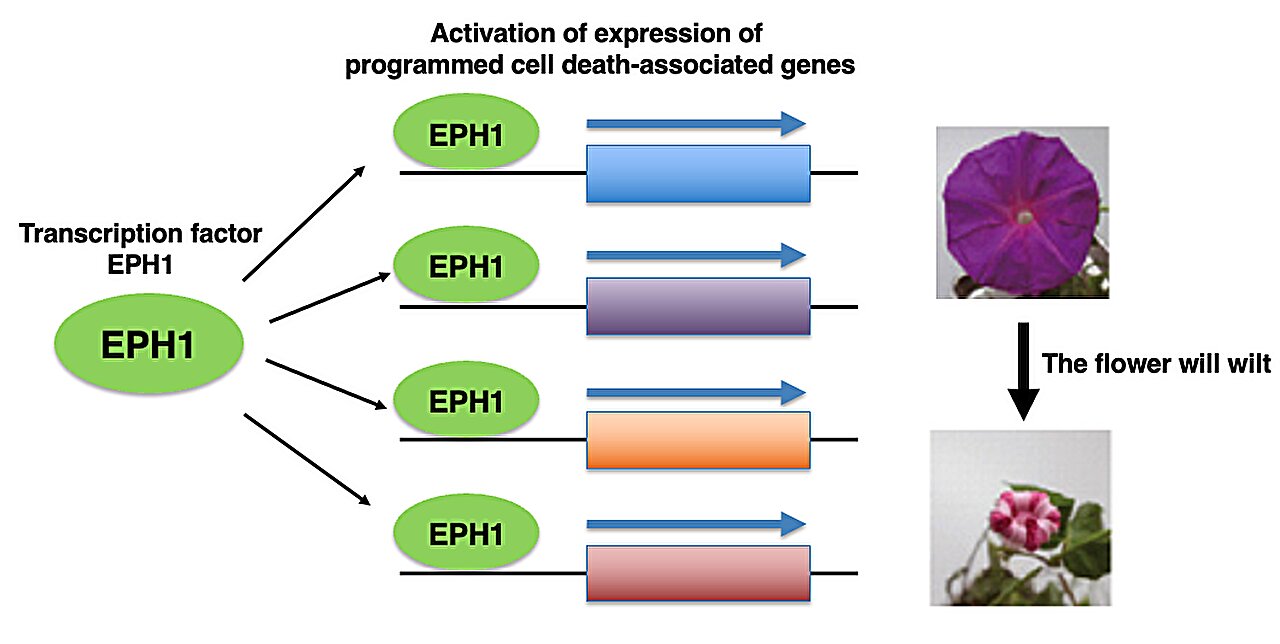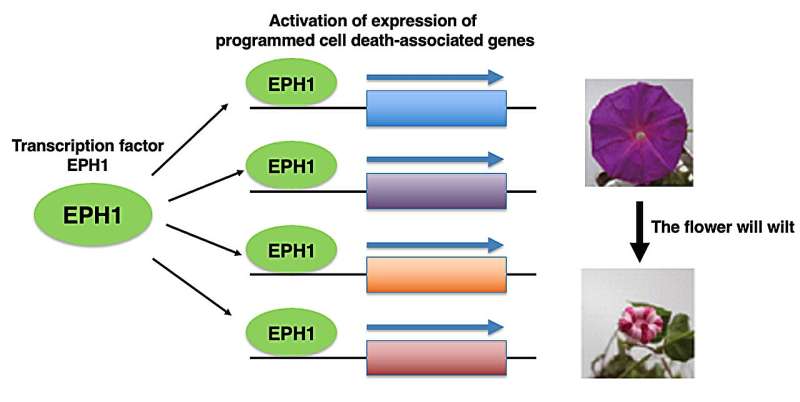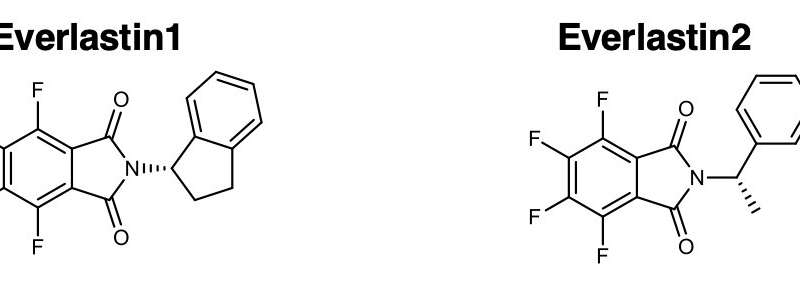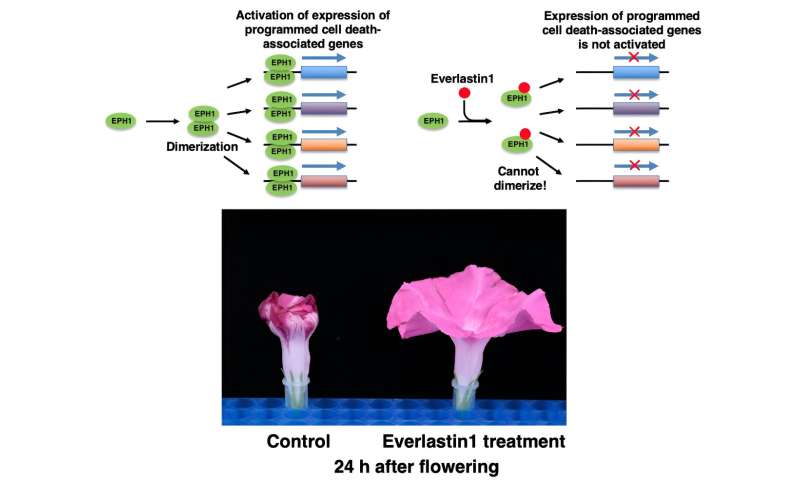

The longevity of plant flowers is controlled by genetically programmed mechanisms. After a certain amount of time after flowering, the expression of genes associated with programmed cell death is induced and cellular components such as proteins and nucleic acids are degraded, causing the flower to wilt and die. In the horticultural field, flower longevity is an important trait that determines the commercial value of ornamental plants, and the development of technologies to prolong flower longevity is desired.
In previous research, a research team identified a transcription factor EPHEMERAL1 as a regulator of flower longevity in the Japanese morning glory, and it was thought that if a chemical could be found that suppressed the function of EPHEMERAL1, it would be possible to extend flower longevity.
In this study, the same researchers succeeded in constructing an assay system that can detect the binding of EPH1 to DNA using a wheat cell-free protein synthesis system and an AlphaScreen system, a molecular interaction analysis technology that PROS has independently developed. Using the AlphaScreen system, they succeeded in isolating Everlastin1 and Everlastin2, compounds that inhibit the binding of EPH1 to DNA.
The analysis using the AlphaScreen system revealed that EPH1 binds to DNA by dimerization and that Everlastin1 and Everlastin2 inhibit this EPH1 dimerization, thereby reducing the ability of EPH1 to bind to DNA. Floating cut morning glory flowers in water with dissolved Everlastin1 or Everlastin2 inhibited DNA and protein degradation and prolonged the longevity of the flowers by approximately twofold.
The paper is published in the journal Nature Plants.
-

Everlastin1 and Everlastin2 share a tetrafluorophthalimide skeleton. The structures of Everlastin1 and Everlastin2 are shown here. Credit: Ehime University
-

In morning glory flowers treated with Everlastin1, Everlastin1 inhibits the dimerization of EPH1 and EPH1 is unable to bind to its target DNA sequences. As a result, the activation of the programmed cell death-related genes was suppressed and flower longevity was prolonged: Everlastin1 treatment extended the longevity of morning glory flowers by approximately twofold. (Photograph of Everlastin1-treated morning glory flowers, courtesy of NARO). Credit: Ehime University
Transcription factors are generally difficult to synthesize and purify and were considered very difficult proteins to develop as chemicals. In this study, by using the wheat germ cell-free protein synthesis system developed by PROS, which can synthesize any protein with high efficiency, and the AlphaScreen system, which can analyze the binding between DNA and unpurified proteins, the researchers succeeded in the synthesis of the transcription factor EPH1 and the binding analysis system of EPH1 and DNA.
By using these technologies, it became possible to carry out compound screening targeting transcription factors and succeeded for the first time in the world to screen compounds that inhibit the function of transcription factors in plants. The methods used in this study are expected to stimulate the development of chemicals targeting transcription factors that were previously considered “undruggable.”
The analogous protein of the transcription factor EPH1 targeted in this study is also thought to be involved in the longevity of major cut flowers such as lilies, and it is hoped that an approach similar to the present study will lead to the development of chemicals that extend the longevity of the colorful flowers sold in flower shops.
More information:
Kenichi Shibuya et al, A chemical approach to extend flower longevity of Japanese morning glory via inhibition of master senescence regulator EPHEMERAL1, Nature Plants (2024). DOI: 10.1038/s41477-024-01767-z
Provided by
Ehime University
Citation:
Study identifies compounds that extend longevity of Japanese morning glory flowers (2024, October 3)
retrieved 3 October 2024
from https://phys.org/news/2024-10-compounds-longevity-japanese-morning-glory.html
This document is subject to copyright. Apart from any fair dealing for the purpose of private study or research, no
part may be reproduced without the written permission. The content is provided for information purposes only.

